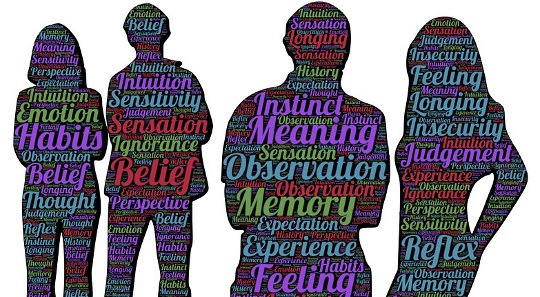
As human beings, the greatest gift we have at our disposal can also be the greatest weapon—words. We can heal ourselves, others, and the world with words; yet they can also be used in a destructive manner. Because of the pressure of living in the world cultures that we have been raised in, we have mimicked and learned dysfunctional and entirely inappropriate ways of relating, not only with others but also with ourselves. Most of us are unaware that the ways in which we relate are entirely distorted and unnatural.
We have been conditioned from birth, by the environment and its dysfunctional systems, to hook into a fear-based mentality and react. Generally, most cultures of the world exist in survival mode, in a pattern of fight or flight, which is a react and defend mentality. A healthy way of relating is when we are free to express our true feelings without fear, when we speak from the heart and communicate honestly, are emotionally stable, and are able to respond instead of react.
Requirements of Conscious Communication
Conscious communication requires that we trust in ourselves, in our truth, and in our ability to express this to others. Reacting is a defense mechanism and responding is an expression of the felt sense. To react is to attack and defend.
Response is a balanced, calm, and stable communication, speaking directly to the emotions with feelings being expressed consciously and mindfully. Reacting uses language that disconnects, finger points, blames, and shames. The language of response is connected, centered, empathic, and compassionate.
Trust has been broken over and over again, and so we have become numb with the pain of our experiences, creating a hard outer shell to defend the soft and vulnerable core of our Being. This shell keeps others out, yet our true loving nature locked away. We have become prisoners of ourselves.
Fundamentally we are Love; even though this may sound a cliché, it is the truth. We are Love. However, this natural and organic core foundation of our Being may feel lost to us. It is not lost but deeply buried under layers of conditioning that have taught us to survive at all costs. We are in fight-or-flight mode the majority of the time, surviving in a hostile environment where it appears that every man and woman is looking out for themselves.
However, if we bring ourselves right into the present moment we can ask this: “Do we have to remain in survival mode or can we dare to explore how it would feel to trust, to be open, transparent, and most importantly, to risk sharing from the heart, communicating from the foundation of Love, which forms the core of each one of us?”
To make this shift requires courage and a yearning to know and experience true peace at the deepest level of our Being. Courage and yearning lead to an inner-shift—one that can and will transform our lives if we dare to risk all for Love. What is there to lose? Only that which imprisons us. Self-love and a loving relationship with ourselves is the key to our freedom.
Deconditioning From Ingrained Patterns of Fear, Defense, Attack, and Survival
To embark upon such a noble quest will require a radical reevaluation of our relationships, a conscious encounter with our wounding, an exploration and clearing of our psychological history, and a period of deconditioning from the ingrained patterns of fear, defense, attack, and survival that have accumulated throughout our lives.
We are blessed to live in times when freedom is offered to most of us on a plate. It is ours for the choosing. Never before in modern history have so many of us been free to make life-serving choices.
We are no longer obliged by religion, culture, or any other external pressures to exist in life-denying regimes that are not even our own. We have inherited our reactive, defended, survival mentality from our ancestors.
The script that forms the imprint of our relating belongs to generations that have gone before us and the times they lived in. We are literally living in the past, no matter how modern we believe ourselves and our lives to be, or how liberated we feel our relationships are. As we free ourselves from dysfunctional relating, we also free the generations to come.
Choice is the great gift bestowed upon us by the age we live in. You have the choice to live or to exist, to survive or to feel alive with the joy of living. Fundamentally, to claim our humanitarian right to freedom and choice—or should we say reclaim this right—we must first come into right relationship with ourselves, which automatically creates right relationship with others and the world.
The Four Intentions as a Model ?for Conscious Communication
The four intentions is a model that can really support our quest to establish a new approach in our communications. It is a way of communicating that directly responds to the call of these transformative times.
The First Intention Is to Speak from the Heart
This means speaking not from our heads but from our hearts. It means to communicate as honestly as we can in every moment. Today we may each experience countless thoughts, ideas, or feelings, some that bring us joy and some that may make us feel uncomfortable or emotional.
Let us set an intent to express these truthfully, being mindful to do so from the heart, be it with words, movement, sound, or in conscious, respectful, and connected silence.
Let us trust our capacity to be present as individuals or in a group and seek to find harmonious ways to express our thoughts and feelings, so fostering harmonious outcomes and resolutions.
The Second Intention Is to Listen from the Heart
This means that we try to listen without judgment, to listen with an open mind, even if we disagree with what the person is saying. We simply try to take in what is being said and to hear it completely.
If we feel the need to express a feeling or thought to that person, we must remain mindful to whether we are reacting or responding, for if we are reacting we are not speaking from the heart.
The Third Intention Is to Communicate Respectfully ?and Wait until the Other Has Finished Speaking
This invites us to wait until the other has finished speaking before we respond. We try not to interject or interrupt. We are mindful not to raise our voice above whoever is speaking in order to be heard ourselves.
Let us be mindful that some voices may be quieter than others and therefore find it difficult to contribute because of that. These voices are to be encouraged as they have equal validity and a right to be heard. Let us not cultivate a communication where the loudest voices rule!
The intent is to wait for the other to make their point to express their thoughts or feelings and then check with them to see if they have finished, at which point we can express our desire to respond and to include our own thoughts and feelings.
The Fourth Intention Is to Speak Leanly
Something that is lean has nothing extra or unnecessary attached to it. Speaking leanly means to keep to the point of what we are trying to say and to let go of any unnecessary details.
When we speak, we need to keep in mind that there is another involved in the communication who may also wish to share and be heard. Speaking leanly fosters the practice of mindfulness in our communications: for example, respecting our own as well as another’s time boundaries and doing our best to acknowledge and honor these.
Let us also practice listening from the heart. Through attentive listening, we foster deep sharing and communication that meets the needs of both or all parties. This approach beautifully serves and honors our need to be seen and heard, gracefully serving the cultivation of harmony with others.
The Practice of Authentic ?Communication—Within a Group
The following suggestions can support us to develop our skills in deep listening, self-expression, conflict resolution, and decision making within a group context.
• Speak from the heart about issues that are important to us, to the group, and to the world.
• Listen from the heart with an open mind and without judgment, even if we are not aligned with what others are saying.
• Speak leanly when expressing ourselves and when communicating with others in the group. Be mindful of time boundaries.
• Develop trust, respect, cooperation, and understanding by communicating authentically.
• Self-monitor—silently check in with ourselves if an emotion is triggered to acknowledge that feeling as our own. Gently and quietly breathe into the emotion, breathe it through, consciously releasing it through the out-breath. Quietly give thanks to whoever it was who triggered the emotion.
• Cultivate deep listening and unconditional positive regard for each person that speaks.
• Be present—the greatest gift we can offer another is our presence. Hold the intent of wishing to be fully present to whoever is speaking and to the group energy, while at the same time remaining present to our felt sense.
• Refine our capacity to be present to another (and ourselves) without judgment.
• In all communication, the need of any individual is to feel seen, heard, and validated. Let us seek to meet this need, even if we do not resonate with what is being expressed.
• Let us remain mindful that the purpose of any communication is not to be right, but to remain present to another, with an unconditional heart.
The ideal setup for a group is to sit in a circle so that all can see each other and everyone is on the same level. This is a nonhierarchical formation and serves to remind us of the importance of each person. We can place something beautiful or meaningful in the center of the circle, as this is the heart of the circle and where we all meet.
If possible, adopt the use of a “talking stick” as a tool to help focus attention on each speaker in the circle, one at a time. When you are holding the stick it is your turn to speak; when you are not, your complete attention is on the person who is speaking.
And remember to breathe in and breathe out peace.
Reprinted with permission of the publisher,
Bear & Company, an imprint of Inner Traditions Inc.
©2013 by Nicolya Christi. www.innertraditions.com
Article Source:
 Contemporary Spirituality for an Evolving World: A Handbook for Conscious Evolution
Contemporary Spirituality for an Evolving World: A Handbook for Conscious Evolution
by Nicolya Christi.
Click here for more info and/or to order this book.
About the Author
 Nicolya Christi is a conscious evolutionist, writer, spiritual teacher and mentor, global activist, and workshop facilitator. She is the founder of the New Consciousness Academy, co-founder of WorldShift International, and a co-initiator of WorldShift 2012. Nicolya practices the principles of Sufism – the core message of which is Unconditional Love and Living From the Heart. She lives near Rennes-le-Chateau in southern France. Visit her website at www.nicolyachristi.com.
Nicolya Christi is a conscious evolutionist, writer, spiritual teacher and mentor, global activist, and workshop facilitator. She is the founder of the New Consciousness Academy, co-founder of WorldShift International, and a co-initiator of WorldShift 2012. Nicolya practices the principles of Sufism – the core message of which is Unconditional Love and Living From the Heart. She lives near Rennes-le-Chateau in southern France. Visit her website at www.nicolyachristi.com.



























